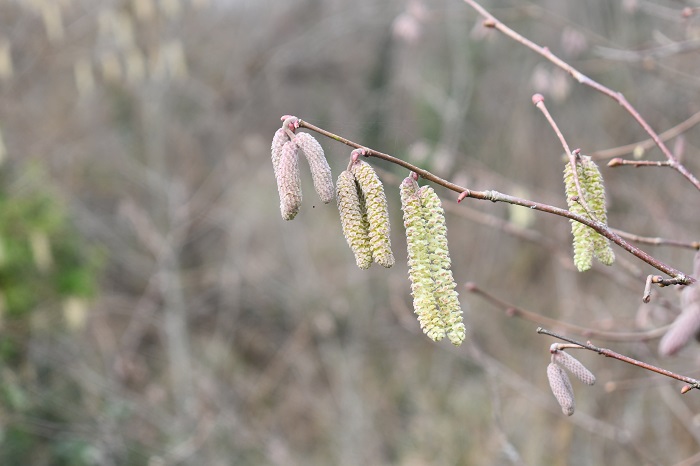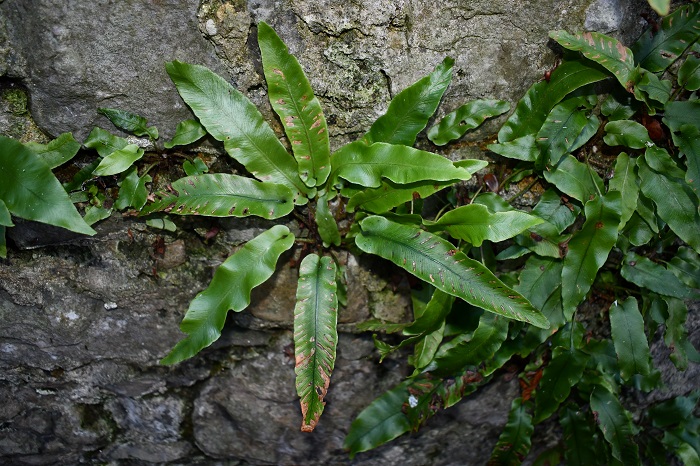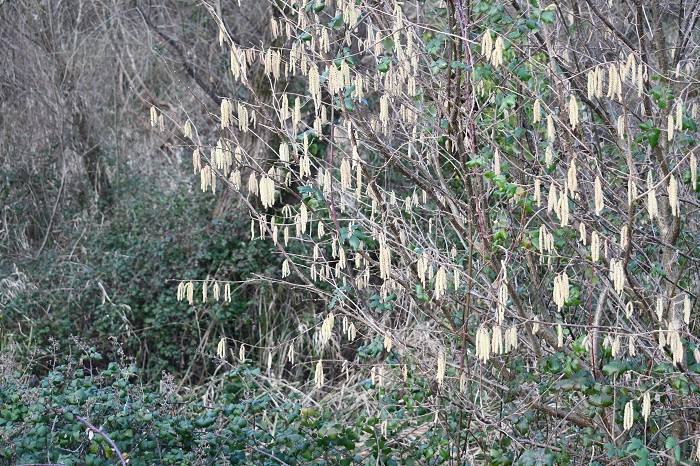11 February 2023
Growing Wild – Harts Tongue and Hazel

Catherine Keena, Teagasc Countryside Management Specialist takes a closer look at some of our native Irish biodiversity to look out for in the countryside.
Harts Tongue

Look out for hart’s tongue fern, the most distinctive fern found on hedge banks, walls and rocky places, especially in limestone areas. Its fronds (fern leaves) can grow up to 75cms but when growing on walls can be shorter. It may not be recognised as a fern because its fronds resemble the leaves of flowering plants. Arching from a tufted rosette base, they are heart shaped at the base and are long narrow undivided tongue-like, with slightly wavy margins, tapering to a point. They are shiny bright green rather firm and leathery. Known as Creamh na muice fia, hart’s tongue ferm, is part of our native Irish biodiversity.
Hazel

Look out for hazel – very conspicuous in hedges, woodland and scrub habitats just now, as the male catkins burst open and expand into beautiful fluffy yellow flowers, fluttering in the breeze which facilitates pollination when clouds of released pollen drift to the tiny bud-like female flowers fringed with a tuft of red hairs. Bees use this early source of pollen. The sight of hazel catkins called lambs tails appearing before the leaves is a true sign of spring. Hazel was one of the first trees to grow in Ireland after the ice age – part of our native Irish biodiversity.
See previous Growing Wild articles below:
- Growing Wild – Whins and Ferns
- Growing Wild – Rose Hips and Flowering Ivy
- Growing Wild – Yarrow and Herb Robert
- Growing Wild – Elderberries and Blackberries
- Growing Wild – Haws and Spindle
- Growing wild – Guelder Rose and Sloes
- Growing wild – Purple loosestrife and Lord and Ladies
- Growing Wild – willowherb and water mint
- Growing Wild – dandelion and greater stitchwort
- Growing Wild – willow, primrose and lady’s smock
- Growing Wild – whitethorn and cow parsley
- Growing Wild – bluebells and guelder rose
- Growing wild – Honeysuckle and Foxglove
- Growing Wild – Elder and Ragged Robin
- Growing wild – dog rose and meadowsweet
- Growing wild – Privet and Lady’s Bedstraw
- Growing Wild – Bird’s foot trefoil and Knapweed
Keep an eye on Teagasc Daily for another Growing Wild later in the month. Learn more from Teagasc about Biodiversity & Countryside
